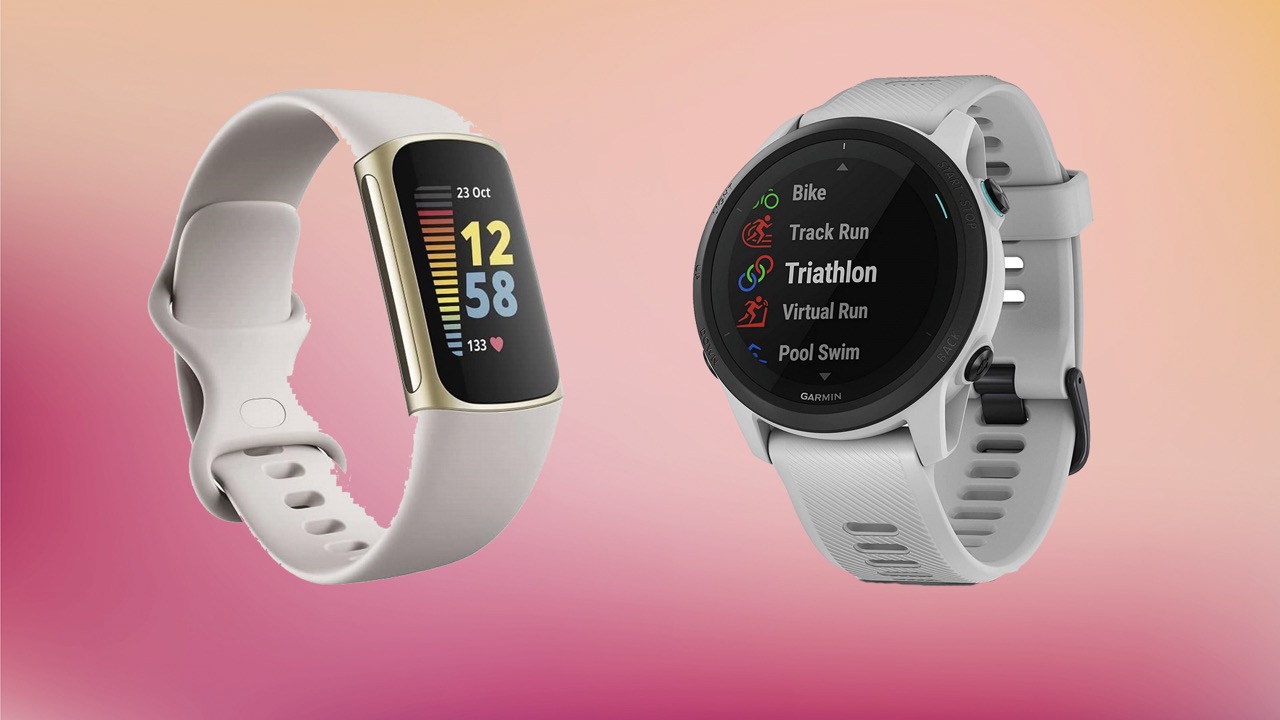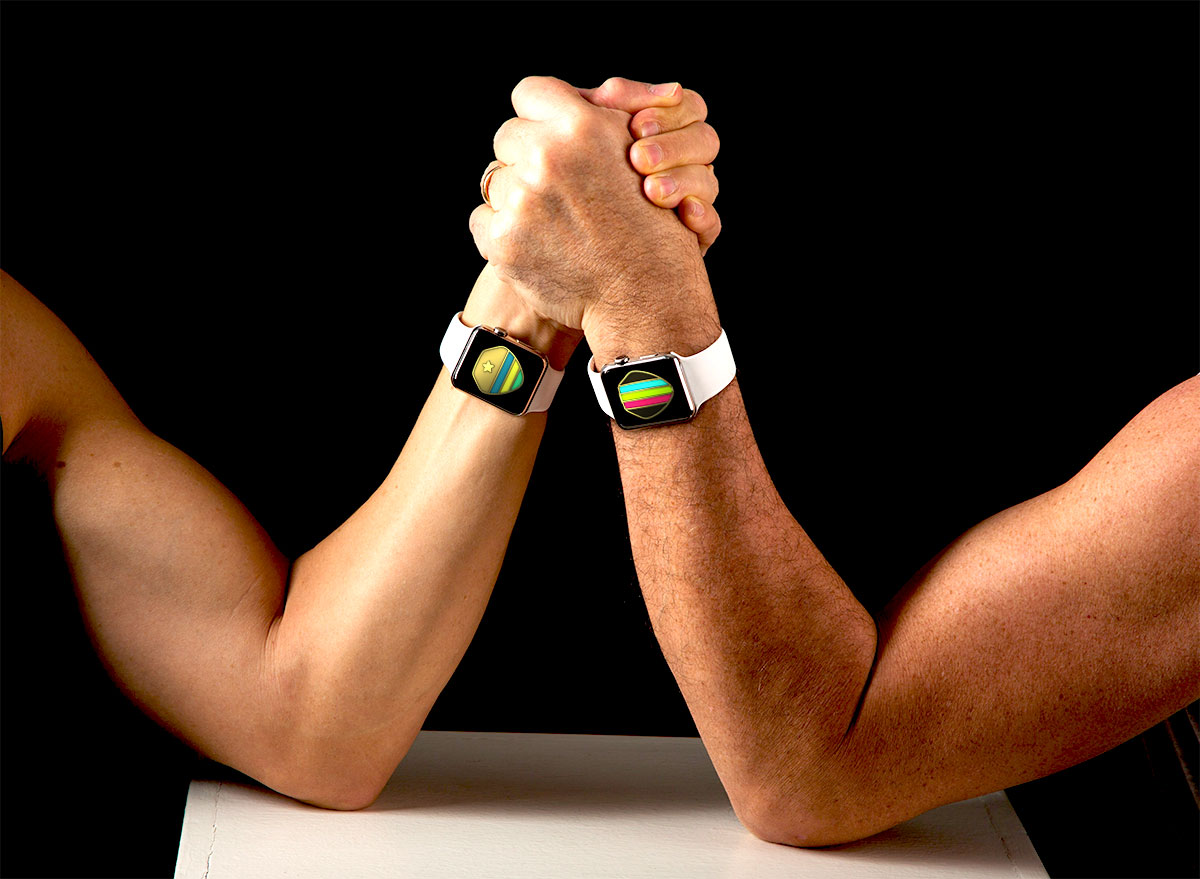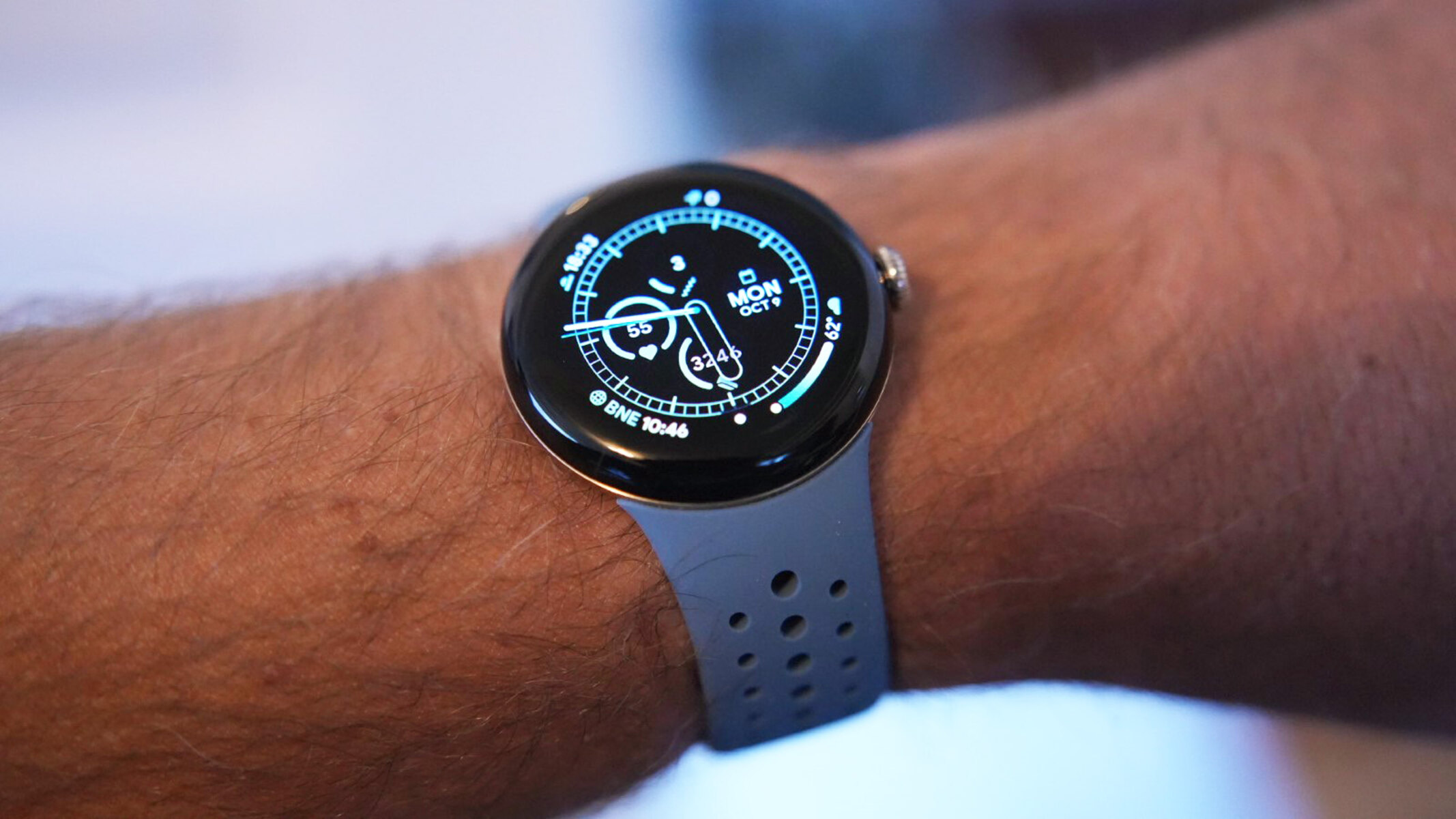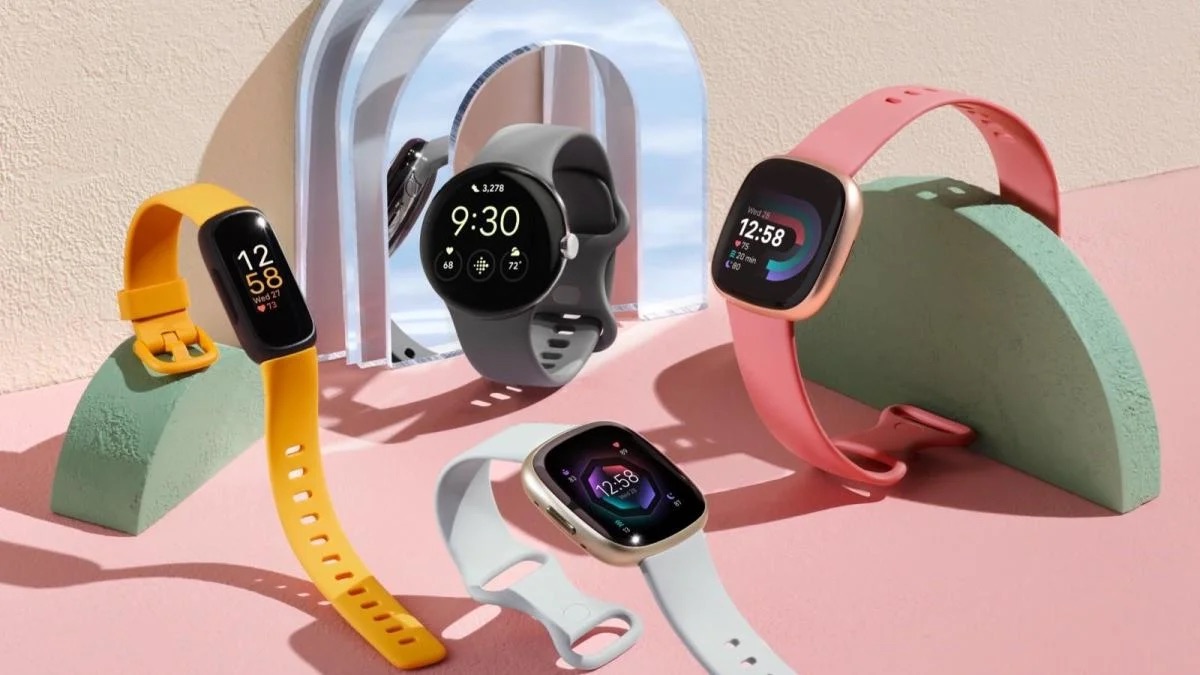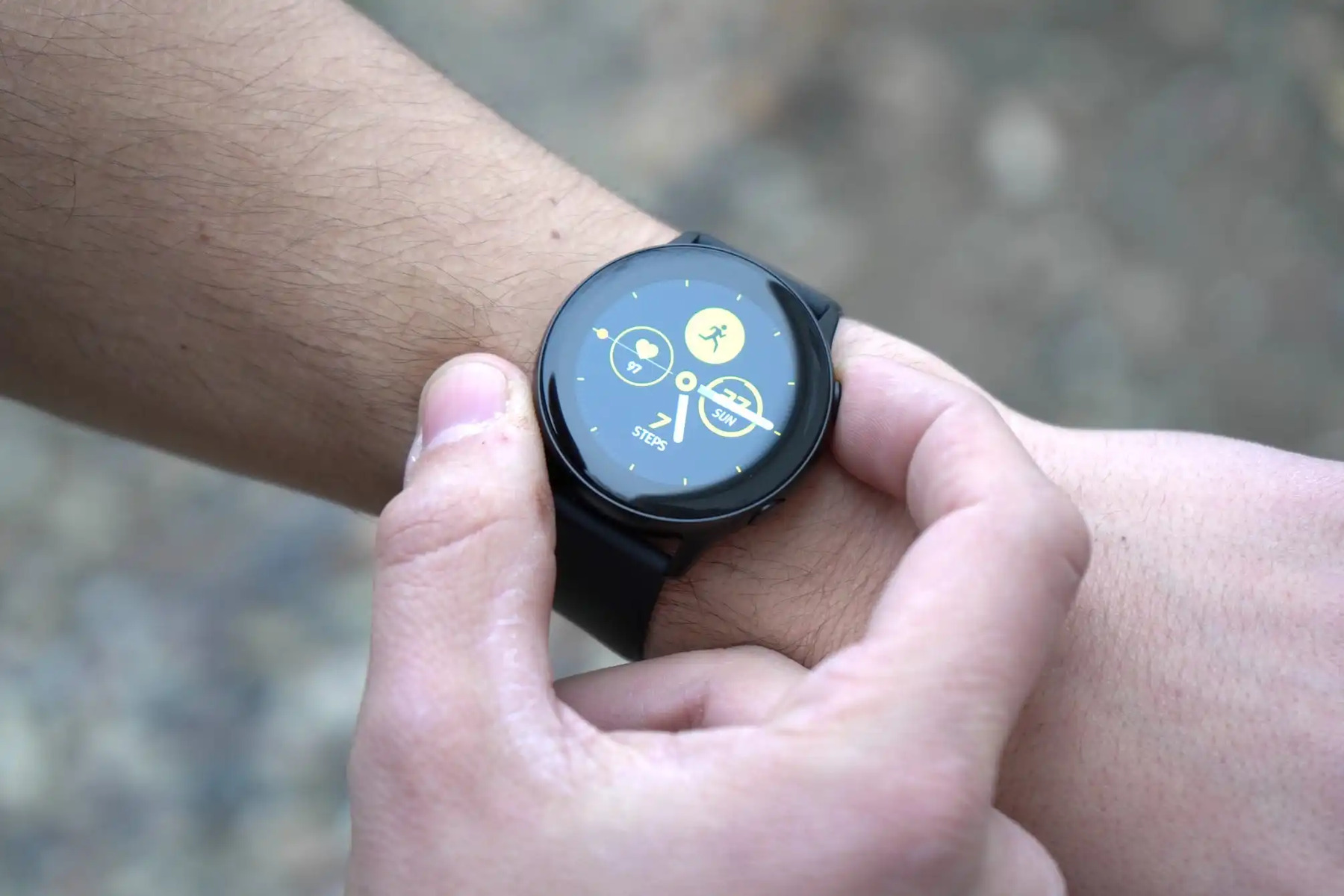Introduction
Wearable technology has revolutionized the way we approach fitness and health monitoring. Two prominent players in this arena, Fitbit and Garmin, have garnered widespread attention for their innovative wearable devices. As consumers increasingly prioritize health and wellness, the demand for feature-rich, user-friendly wearables has surged. In this article, we embark on a comprehensive comparison of Fitbit and Garmin wearables, delving into their design, features, and overall value proposition to help you make an informed decision.
Both Fitbit and Garmin have established themselves as frontrunners in the wearable technology market, catering to diverse user preferences and fitness goals. While Fitbit excels in sleek, minimalist designs and user-friendly interfaces, Garmin is renowned for its robust, feature-packed wearables tailored for fitness enthusiasts and outdoor adventurers. By exploring the distinct strengths and capabilities of these brands, we aim to provide valuable insights that can guide you in selecting the ideal wearable companion for your lifestyle.
With an array of advanced functionalities such as activity tracking, heart rate monitoring, and sleep analysis, Fitbit and Garmin wearables offer users a holistic approach to health management. Moreover, the seamless integration of these devices with companion apps and online platforms enhances the overall user experience, fostering motivation and accountability in achieving fitness goals. As we delve into the intricacies of these wearables, we will unravel the unique attributes and performance benchmarks that set Fitbit and Garmin apart in the competitive landscape of wearable technology.
As we embark on this wearable showdown, it's essential to recognize that the choice between Fitbit and Garmin extends beyond mere technical specifications. It encompasses an understanding of individual preferences, fitness aspirations, and lifestyle dynamics. By scrutinizing the design, activity tracking features, heart rate monitoring, sleep tracking capabilities, battery life, compatibility with devices and apps, as well as the overall value proposition, we aim to equip you with the knowledge needed to make an informed decision. Let's dive into the realm of Fitbit and Garmin wearables, unraveling their distinctive attributes and functionalities to illuminate the path toward an empowered, healthier lifestyle.
Design and Comfort
The design and comfort of wearable devices play a pivotal role in their integration into users' daily lives. Fitbit and Garmin have distinct approaches to design, catering to diverse preferences and lifestyles.
Fitbit prides itself on sleek, minimalist designs that seamlessly blend fashion and functionality. The Fitbit Charge 4, for instance, features a slim, lightweight profile that ensures comfort during extended wear. The smooth, curved edges and customizable bands contribute to a stylish yet unobtrusive appearance. This design ethos extends to Fitbit's smartwatches, such as the Versa 3, which exude a modern, versatile aesthetic suitable for various occasions.
Garmin, on the other hand, emphasizes durability and ruggedness in its design philosophy, particularly in its fitness-oriented wearables. The Garmin Forerunner series exemplifies this approach, featuring robust construction and a sporty, utilitarian look that resonates with fitness enthusiasts and outdoor adventurers. The emphasis on durability does not compromise comfort, as Garmin's devices are ergonomically crafted to ensure a snug fit during workouts and outdoor activities.
Comfort is a crucial aspect of wearable design, especially for devices meant to be worn throughout the day and during physical activities. Fitbit's attention to detail in creating lightweight, unobtrusive devices ensures that users can comfortably wear them around the clock, promoting consistent usage and data tracking. Garmin's focus on secure, ergonomic fits aligns with the demands of active users, ensuring that the wearables remain in place during vigorous workouts and outdoor pursuits.
Both Fitbit and Garmin offer a range of band options to cater to individual preferences and wrist sizes, further enhancing the comfort and personalization of their wearables. The availability of different band materials, such as silicone, woven, and leather, allows users to customize the look and feel of their devices to align with their style and comfort preferences.
In essence, while Fitbit excels in delivering stylish, lightweight designs suitable for everyday wear, Garmin prioritizes durability and secure fits tailored for fitness enthusiasts and outdoor adventurers. The distinct design philosophies of these brands cater to a wide spectrum of user preferences, ensuring that individuals can find a wearable device that seamlessly integrates into their lifestyle while prioritizing comfort and style.
Activity Tracking Features
Activity tracking lies at the core of wearable technology, empowering users to monitor their daily physical exertion, set fitness goals, and track progress over time. Both Fitbit and Garmin offer a diverse array of activity tracking features, catering to users with varying fitness levels and objectives.
Fitbit's activity tracking capabilities are renowned for their user-friendly interface and comprehensive data insights. The Fitbit Charge 4, for example, excels in tracking steps, distance traveled, and floors climbed, providing users with real-time updates on their daily activity levels. Furthermore, Fitbit devices integrate automatic exercise recognition, enabling seamless tracking of workouts such as running, cycling, and swimming. This hands-free approach ensures that users can focus on their activities without the need to manually initiate tracking.
Garmin's commitment to activity tracking manifests in its advanced metrics and performance analytics, particularly in its GPS-enabled wearables. The Garmin Forerunner series, designed for runners and multisport athletes, offers detailed tracking of pace, cadence, and elevation, delivering in-depth insights into performance metrics. Moreover, Garmin's wearables incorporate specialized activity profiles for various sports and outdoor activities, allowing users to customize their tracking experience based on their specific fitness pursuits.
Both Fitbit and Garmin prioritize heart rate monitoring as a fundamental component of their activity tracking features. Fitbit's PurePulse heart rate technology ensures continuous, automatic heart rate tracking, enabling users to gauge their exertion levels and optimize their workouts. Similarly, Garmin's Elevate wrist heart rate technology delivers accurate heart rate data during both rest and activity, facilitating precise intensity tracking and recovery analysis.
Furthermore, Fitbit and Garmin offer sleep tracking functionalities to provide users with comprehensive insights into their rest patterns and sleep quality. Fitbit's sleep tracking capabilities encompass sleep stage analysis, highlighting periods of light, deep, and REM sleep, along with sleep score assessments that aid in optimizing sleep routines. Garmin's sleep tracking features leverage advanced algorithms to monitor sleep cycles and provide users with actionable recommendations for improving sleep quality.
In essence, both Fitbit and Garmin excel in activity tracking features, catering to a spectrum of fitness preferences and performance tracking needs. While Fitbit emphasizes intuitive, user-friendly tracking experiences suitable for daily activities and workouts, Garmin's focus on advanced metrics and specialized activity profiles appeals to athletes and outdoor enthusiasts seeking in-depth performance analytics. Whether you are a casual fitness enthusiast or a dedicated athlete, the activity tracking features of Fitbit and Garmin wearables are tailored to elevate your fitness journey with actionable insights and performance optimization tools.
Heart Rate Monitoring
Heart rate monitoring is a pivotal aspect of wearable technology, offering users real-time insights into their cardiovascular exertion and overall fitness levels. Both Fitbit and Garmin have integrated advanced heart rate monitoring technologies into their wearables, empowering users to optimize their workouts and track their heart health with precision.
Fitbit's commitment to heart rate monitoring is exemplified through its proprietary PurePulse technology, which facilitates continuous, automatic tracking of heart rate throughout the day. This feature not only provides users with real-time heart rate data during workouts but also enables comprehensive monitoring of resting heart rate, facilitating insights into overall cardiovascular health. The accuracy and reliability of PurePulse technology ensure that users can gauge their exertion levels with precision, enabling them to tailor their workouts for optimal results.
Similarly, Garmin's Elevate wrist heart rate technology delivers robust heart rate monitoring capabilities, offering users accurate and detailed insights into their cardiovascular performance. Whether during rest or activity, Garmin's wearables provide continuous heart rate data, enabling users to monitor their exertion levels and recovery patterns with precision. This feature is particularly beneficial for athletes and fitness enthusiasts seeking to optimize their training intensity and recovery strategies based on accurate heart rate metrics.
Moreover, both Fitbit and Garmin leverage heart rate monitoring data to offer personalized insights and performance assessments. Fitbit devices utilize heart rate data to calculate cardio fitness levels, empowering users to gauge their overall cardiovascular health and track improvements over time. Additionally, Fitbit's Active Zone Minutes feature utilizes heart rate data to guide users toward maintaining optimal exertion levels during workouts, ensuring that they maximize the benefits of their physical activities.
Garmin's approach to heart rate monitoring extends to performance analytics, leveraging heart rate data to provide users with advanced metrics such as training load, training status, and recovery time. These insights enable athletes and fitness enthusiasts to fine-tune their training regimens based on precise heart rate data, optimizing performance and minimizing the risk of overexertion.
In essence, heart rate monitoring is a cornerstone of both Fitbit and Garmin wearables, offering users comprehensive insights into their cardiovascular health and fitness performance. Whether you seek to optimize your workouts, track your heart health, or enhance your athletic performance, the advanced heart rate monitoring capabilities of Fitbit and Garmin wearables are tailored to empower you with actionable insights and performance optimization tools.
Sleep Tracking
Sleep tracking has emerged as a prominent feature in wearable technology, offering users valuable insights into their sleep patterns and overall sleep quality. Both Fitbit and Garmin have integrated sophisticated sleep tracking functionalities into their wearables, empowering users to understand and optimize their rest routines.
Fitbit's commitment to sleep tracking is exemplified through its comprehensive approach to monitoring sleep stages and patterns. The Fitbit Charge 4, for instance, employs advanced sensors to detect and analyze various sleep stages, including light, deep, and REM sleep. This detailed analysis provides users with a holistic view of their sleep cycles, enabling them to identify patterns and make informed adjustments to improve sleep quality. Additionally, Fitbit's sleep score feature consolidates sleep data into a single score, simplifying the assessment of overall sleep quality and facilitating actionable insights for enhancing rest routines.
Garmin's sleep tracking capabilities leverage advanced algorithms and motion sensors to monitor sleep cycles and patterns with precision. The Garmin Forerunner series, renowned for its performance-focused features, extends its prowess to sleep tracking, offering users detailed insights into their sleep stages and duration. By analyzing sleep data, Garmin's wearables provide users with personalized recommendations for optimizing sleep routines, fostering improved rest quality and overall well-being.
Moreover, both Fitbit and Garmin prioritize the integration of sleep tracking data with broader health and wellness insights. Fitbit's app ecosystem, for example, consolidates sleep data with activity and heart rate metrics, enabling users to correlate their sleep patterns with their overall physical exertion and cardiovascular health. This holistic approach to health management empowers users to make informed lifestyle adjustments that positively impact both their sleep quality and fitness levels.
Garmin's emphasis on comprehensive health monitoring extends to its sleep tracking features, integrating sleep data with performance analytics to provide users with a holistic view of their well-being. By correlating sleep patterns with activity levels and heart rate metrics, Garmin's wearables offer users a nuanced understanding of the interconnected nature of sleep, physical exertion, and cardiovascular health. This integrated approach equips users with the knowledge needed to optimize their overall health and well-being.
In essence, sleep tracking is a pivotal component of both Fitbit and Garmin wearables, offering users valuable insights into their rest routines and sleep quality. Whether you seek to enhance your sleep patterns, optimize your fitness performance, or foster overall well-being, the advanced sleep tracking capabilities of Fitbit and Garmin wearables are tailored to empower you with actionable insights for a healthier, more restful lifestyle.
Battery Life
Battery life is a crucial aspect of wearable technology, significantly impacting the user experience and convenience of these devices. Fitbit and Garmin have made substantial strides in optimizing the battery performance of their wearables, ensuring extended usage between charges to accommodate diverse lifestyles and usage patterns.
Fitbit's commitment to prolonged battery life is evident in its latest devices, such as the Fitbit Charge 4 and Versa 3. These wearables boast impressive battery longevity, with the Charge 4 offering up to 7 days of usage on a single charge, while the Versa 3 extends this duration to approximately 6+ days. This extended battery life aligns with Fitbit's focus on seamless integration into users' daily routines, minimizing the need for frequent recharging and ensuring consistent tracking of health and fitness metrics.
Garmin's approach to battery optimization is tailored to the demands of active users and outdoor enthusiasts. The Garmin Forerunner series, renowned for its robust performance in tracking outdoor activities and workouts, delivers extended battery life to accommodate prolonged usage during outdoor pursuits. For example, the Garmin Forerunner 945 offers up to 2 weeks of battery life in smartwatch mode, ensuring that users can rely on their wearables for extended periods without the inconvenience of frequent recharging.
Moreover, both Fitbit and Garmin have implemented power-saving modes and customizable settings to further enhance battery efficiency. Fitbit's devices feature smart power management options, allowing users to optimize battery usage based on their usage patterns and preferences. Similarly, Garmin's wearables offer battery saver modes and customizable settings that enable users to prioritize specific features while conserving power, ensuring that the devices remain operational for extended durations, especially during outdoor adventures or extended workouts.
The prolonged battery life of Fitbit and Garmin wearables aligns with the brands' commitment to delivering uninterrupted health and fitness tracking experiences. Whether you seek a wearable for daily activity monitoring or extended outdoor pursuits, the extended battery performance of Fitbit and Garmin wearables ensures that you can rely on these devices to support your health and fitness goals without the inconvenience of frequent recharging.
In essence, the extended battery life of Fitbit and Garmin wearables reflects the brands' dedication to optimizing user experiences and accommodating diverse usage scenarios. Whether you prioritize seamless integration into your daily routine or extended usage during outdoor activities, the prolonged battery performance of Fitbit and Garmin wearables ensures that these devices remain reliable companions in your health and fitness journey.
Compatibility and Apps
The compatibility and app ecosystem of wearable devices play a pivotal role in enhancing the overall user experience, offering seamless integration with smartphones, tablets, and other digital platforms. Fitbit and Garmin have prioritized the development of companion apps and device compatibility to ensure that users can harness the full potential of their wearables while enjoying a cohesive digital ecosystem.
Fitbit's commitment to compatibility is reflected in its versatile app ecosystem, which supports seamless integration with a wide range of smartphones, including both iOS and Android devices. The Fitbit app serves as a centralized hub for users to access their health and fitness data, set goals, track progress, and engage in challenges and community interactions. This user-friendly app interface empowers users to gain actionable insights into their health metrics and connect with a vibrant community of like-minded individuals, fostering motivation and accountability in achieving fitness goals.
Moreover, Fitbit's wearables are designed to seamlessly synchronize with the Fitbit app, ensuring that users can effortlessly access their health and fitness data, receive notifications, and customize their device settings. The compatibility of Fitbit devices extends to popular third-party apps, enabling users to integrate their health and fitness data with platforms such as Strava, MyFitnessPal, and others, fostering a holistic approach to health management and fitness tracking.
Garmin's approach to compatibility and apps centers around its robust Garmin Connect app, which serves as a comprehensive platform for users to access their health and fitness data, engage in challenges, and leverage advanced training insights. The Garmin Connect app is compatible with both iOS and Android devices, offering users a seamless digital interface to monitor their performance metrics, set goals, and access personalized training plans. This app ecosystem is designed to empower users with in-depth performance analytics, enabling them to optimize their training regimens and track their progress over time.
Furthermore, Garmin's wearables seamlessly integrate with the Garmin Connect app, ensuring that users can effortlessly synchronize their health and fitness data, receive smart notifications, and access advanced training features. The compatibility of Garmin devices extends to a diverse array of third-party apps, enabling users to integrate their activity and performance metrics with platforms such as TrainingPeaks, Komoot, and other fitness and wellness apps, fostering a tailored approach to health and fitness management.
In essence, both Fitbit and Garmin have prioritized compatibility and app ecosystems to ensure that users can seamlessly integrate their wearables into their digital lifestyles. Whether you seek a cohesive platform to access health and fitness data, engage with a vibrant community, or leverage advanced training insights, the compatibility and app ecosystems of Fitbit and Garmin wearables are tailored to empower you with a holistic approach to health and fitness management.
Price and Value
When considering the purchase of a wearable device, the aspect of price and the value it offers is a significant factor that influences the decision-making process. Both Fitbit and Garmin offer a range of wearable devices with varying price points, each accompanied by unique features and capabilities that contribute to their overall value proposition.
Fitbit has positioned itself as a brand that caters to a diverse audience, offering wearables at different price tiers to accommodate varying budgets and preferences. The Fitbit Charge 4, known for its comprehensive activity tracking features and sleek design, presents a compelling value proposition at a mid-range price point. This device encompasses advanced functionalities such as built-in GPS, heart rate monitoring, sleep tracking, and access to the Fitbit app ecosystem, making it an attractive option for users seeking a holistic approach to health and fitness tracking without a substantial financial investment.
On the other hand, Garmin's wearable devices are renowned for their robust performance and advanced metrics, catering to fitness enthusiasts and outdoor adventurers. The Garmin Forerunner series, which includes models such as the Forerunner 245 and Forerunner 945, offers extensive features such as GPS navigation, advanced running dynamics, and performance monitoring tools. While these devices are positioned at a higher price point compared to entry-level wearables, they deliver exceptional value for users who prioritize in-depth performance analytics, durability, and specialized activity tracking.
In assessing the value proposition of Fitbit and Garmin wearables, it is essential to consider the longevity of the devices and the overall user experience they offer. Fitbit's commitment to user-friendly interfaces, seamless app integration, and stylish designs contributes to the overall value of its wearables, appealing to users who seek a balance of functionality and aesthetic appeal at a competitive price point. The availability of affordable options such as the Fitbit Inspire 2 further expands the brand's accessibility, providing users with essential health and fitness tracking features at a compelling value.
Garmin's emphasis on durability, advanced metrics, and specialized activity profiles aligns with the value expectations of users who prioritize performance tracking and outdoor pursuits. While the initial investment in Garmin wearables may be higher, the durability, extensive feature sets, and long-term reliability contribute to a compelling value proposition for users who demand robust performance and in-depth health and fitness insights.
In essence, the price and value of Fitbit and Garmin wearables are defined by a delicate balance of features, performance capabilities, and overall user experience. Whether you prioritize affordability, comprehensive activity tracking, advanced performance analytics, or durability for outdoor activities, both Fitbit and Garmin offer compelling value propositions tailored to diverse user preferences and fitness aspirations.
Conclusion
In conclusion, the comparison between Fitbit and Garmin wearables unveils a landscape of diverse features, design philosophies, and value propositions tailored to cater to a spectrum of user preferences and fitness aspirations. Fitbit excels in delivering sleek, minimalist designs, user-friendly interfaces, and a comprehensive app ecosystem, making it an ideal choice for individuals seeking a balance of style, functionality, and affordability in their wearable devices. The brand's commitment to holistic health and fitness tracking, encompassing activity monitoring, heart rate tracking, sleep analysis, and personalized insights, positions Fitbit as a versatile companion for users striving to achieve their wellness goals with seamless integration into their daily routines.
On the other hand, Garmin's wearables are synonymous with durability, advanced performance analytics, and specialized activity profiles, catering to athletes, outdoor enthusiasts, and fitness aficionados who demand robust features and in-depth insights into their physical exertion. The brand's emphasis on GPS navigation, advanced running dynamics, and extended battery life aligns with the needs of users seeking comprehensive performance tracking and reliability during outdoor pursuits. Garmin's wearables stand out as resilient companions for individuals who prioritize durability, advanced metrics, and specialized tracking features tailored to their specific fitness pursuits.
Ultimately, the choice between Fitbit and Garmin wearables transcends technical specifications and price points; it hinges on individual preferences, fitness goals, and lifestyle dynamics. Whether you prioritize a stylish, everyday companion for comprehensive health and fitness tracking or a rugged, performance-driven wearable tailored for outdoor adventures and advanced training insights, both Fitbit and Garmin offer compelling value propositions that cater to diverse user needs.
As the wearable technology landscape continues to evolve, Fitbit and Garmin remain at the forefront, empowering users with innovative features, actionable insights, and seamless integration into their digital lifestyles. The comprehensive comparison presented in this article aims to equip users with the knowledge needed to make an informed decision, guiding them toward selecting the ideal wearable companion that aligns with their unique preferences and empowers them in their journey toward a healthier, more active lifestyle.







